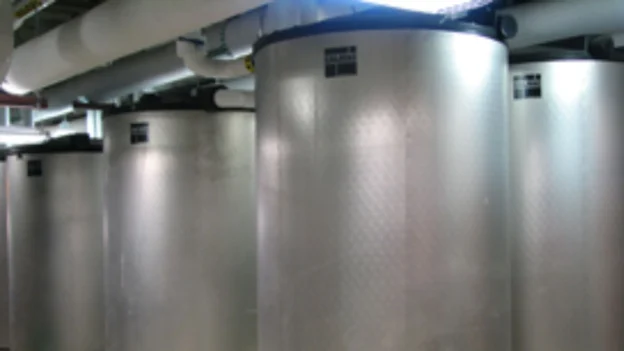How we consume energy in modern buildings has become a critical issue for the stability of the power grid. With rising temperatures and the adoption of intermittent renewable sources, the challenge of balancing supply and demand is intensifying. However, an innovative, though not entirely new, approach is gaining momentum thanks to materials science research at Texas A&M University.
Ice battery technology
Thermal energy storage systems, known as “ice batteries”, operate on a simple and efficient principle: they use cheaper and more abundant electricity at night to freeze large quantities of water or other materials. At the same time, during the day, when consumption spikes, they use the stored cold to air-condition buildings, which reduces the strain on the power grid and lowers energy bills.
Dr. Patrick Shamberger, Department of Materials Science and Engineering, seeks to refine this technology. His work, published in The Journal of Physical Chemistry C, focuses on improving the stability and durability of phase-change materials such as salt hydrates. By solving problems such as phase segregation, the team seeks to ensure that these systems can function reliably for decades.
Dr. Shamberger’s research seeks to tailor the freezing point of these materials to optimally integrate with existing HVAC systems.(HVAC) systems. This improvement is critical to achieving mass adoption of the technology and its integration into a smarter grid environment.
Diverting energy consumption away from peak hours is a smart strategy to avoid building more costly power plants. With an automated system that stores energy when it is cheap and releases it when it is most needed, buildings not only become more efficient, but also become stakeholders in grid management.
Source: Texas A&M
Photo: www.calmac.com

